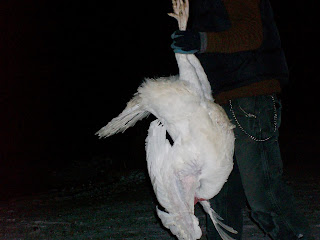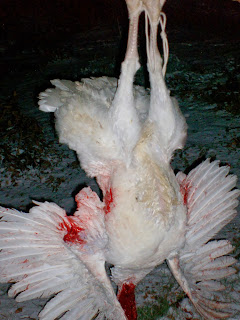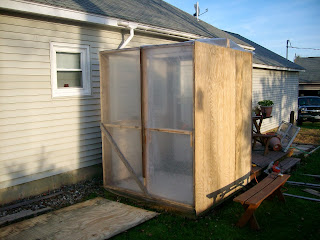And yes, I could have tried to give you a short version of why quality fats are good for you... but it's 9:30 at night, I'm pretty tired, and I'm too lazy. So..... you should read the article, mkay? :D
Anyhow... One of my favorite healthy fats to use in cooking is lard. I especially love to use this in my super wonderful pie crusts that I occasionally make for pot pies (have I mentioned how epic they are?). Now, I can actually remember a time when I was a lot younger when they sold lard in plastic tubs (just like butter) in the grocery stores. I don't remember brand names or anything, just a yellow plastic tub with the word LARD on the front. I cannot even imagine where that lard must have come from, or what quality it must have been, but I am so glad we never consumed it.
The lard I render, however, is creamy and rich and adds wonderful flavor to whatever you use it for - try making french fries with it... you'll never fry them in "vegetable" oil again! (Did you know that vegetable oil actually does not consist of any vegetables at all? It's oil from SEEDS!! And what's worse... it's most likely from GMO seeds!!)
To render lard, you start with 1.5 - 2.5 pounds of quality grass-fed, organic beef suet or leaf lard from pigs. I buy mine at our local food cooperative and it's fairly inexpensive.
Cut the lard into 1/2 inch chunks and put them in a heavy-bottomed stock pot with 1/4 - 1/2 Cup of water. Simmer on Medium-Low heat for about 45 minutes to an hour, stirring occasionally to prevent the lard from scorching and/or sticking to the bottom of the pot.
As the suet or lard renders, the liquid will become golden, and small bits of fried fat will start to rise to the top. These are called "cracklins," and you can actually save these after you are done rendering to use in salads, on top of casseroles, by themselves as a healthy snack, etc. Salt 'em up and mmmmmMM have you got sump'm gooood!
Cracklins. Looks like popcorn chicken, right?
Anyhow. Once most of the cracklins start to sink to the bottom of the pot, your lard is ready to be jarred. I use Ball mason jars to store the rendered lard in, but any glass container with a fitted lid should do fine. Strain the liquid from the pot through a mesh strainer lined with cheesecloth or a paper towel (if you are going to use a paper towel, I highly recommend something cheap and 1-ply... NOT Brawny... the lard won't pass through it and you'll end up with a huge mess... ask me how I know.)
Allow the lard to cool before putting the lid on the jar. The lard will be golden while it's hot, but will turn white and creamy when it cools! It's pretty neat.
Hot....
Cooled!
Rendered lard will last for a fairly long time at room-temperature, but will last even longer when stored in the fridge. I usually only make one jar-full at a time so I don't bother putting it in the fridge, but I also tend to use it up within a month or so, so if you don't think you'll use it that fast, I'd keep it in the fridge.






































